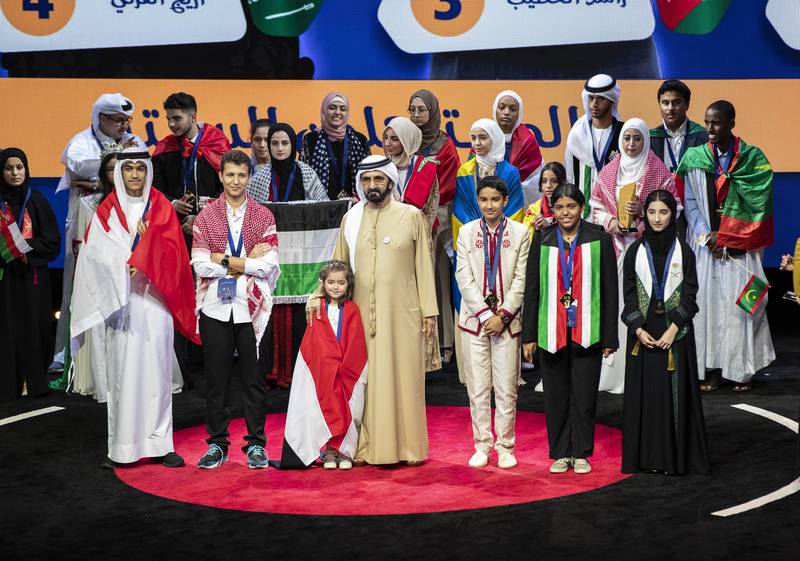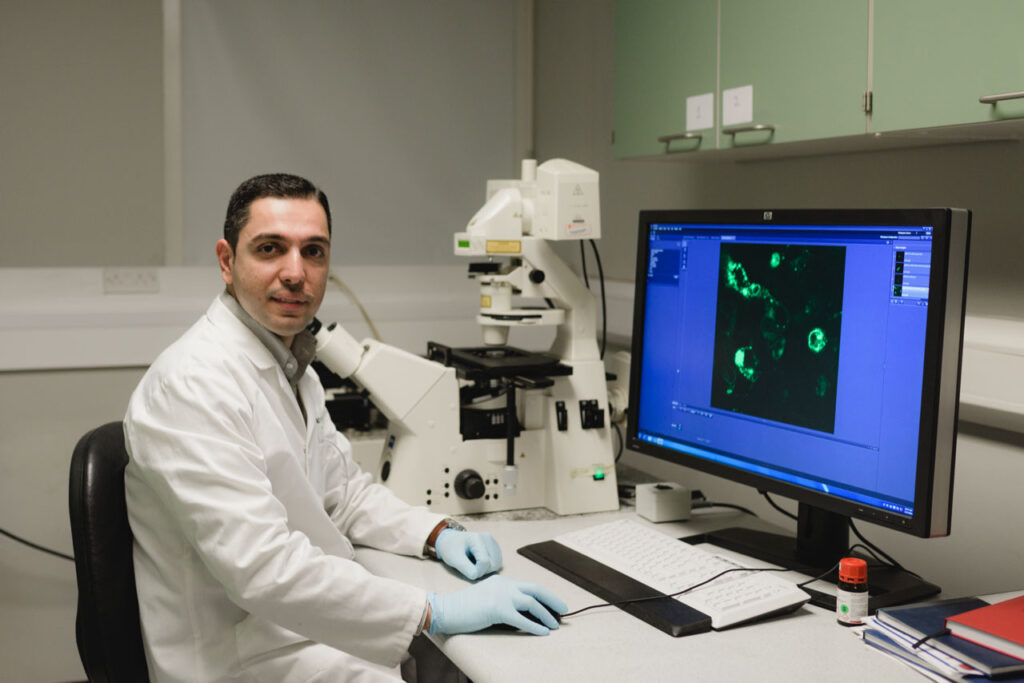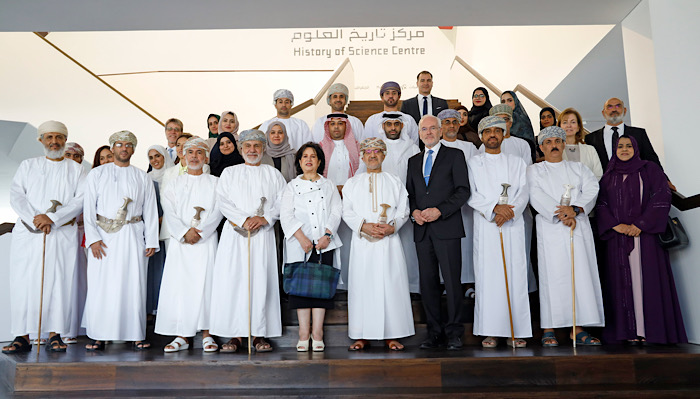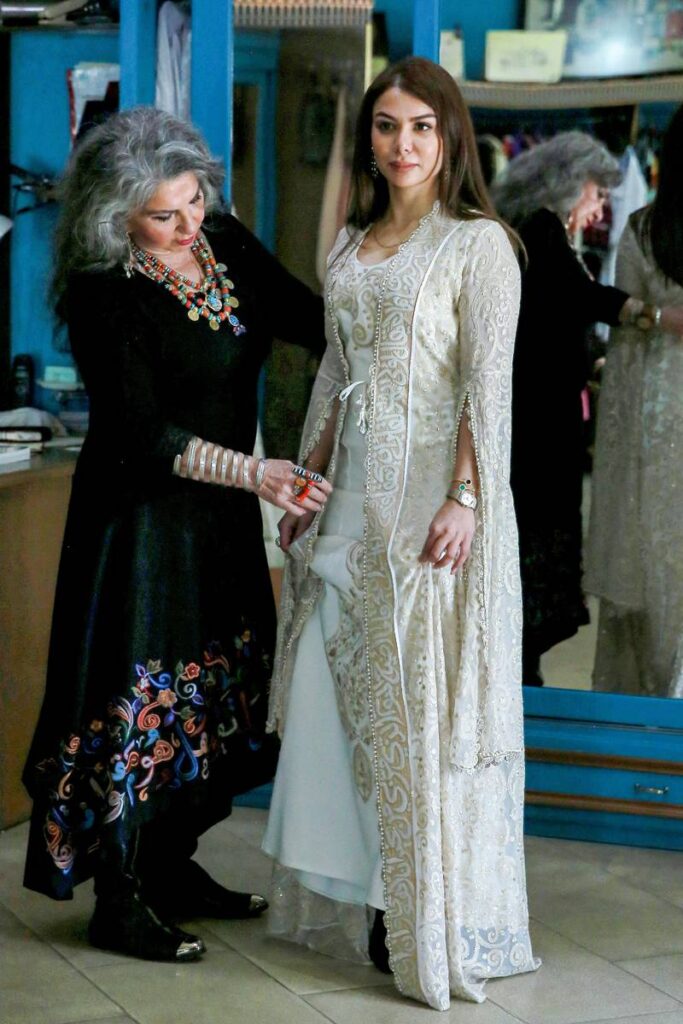An interview with Sada Mire dives into the difficulties and rewards of preserving history and letting local perspectives guide heritage management in Somalia and Somaliland.
SOMALIA AND SOMALILAND are home to a rich heritage of archaeological treasures. But until recently, there was only one active, formally trained Somali archaeologist working in the region: Sada Mire.
In 1991, Mire was forced to flee Somalia with her family as a teenager after her father was killed by a genocidal government. She gained asylum in Sweden and eventually earned her Ph.D. in archaeology from University College London. During her studies, she learned that some of the significant stone tools that shaped scientists’ views of evolution came from Somaliland but were taken to Europe during the colonial era.
Inspired, Mire returned to her homeland determined to retell the history of the Horn of Africa and preserve its heritage—despite the difficulty of working in a region where religious sects jealously control narratives around Somali history and identity, and political conflict is causing humanitarian crises.
Somaliland is not officially a nation-state. It’s a self-declared country that is considered part of Somalia. A British protectorate since the 1880s, Somaliland became an independent country recognized by the United Nations on June 26, 1960. Less than a week later, it merged with the newly independent country Somalia. Early political tensions worsened in 1969 when Gen. Mohamed Siad Barre staged a coup and installed himself as president, imposing ethnic nationalist policies that favored one of the main Somali clans over the rest.
In the 1980s, civil war broke out between Barre’s dictatorship and the Somali National Movement, primarily composed of the Isaaq clan, the largest in northwest Somalia, including what is today Somaliland. The Barre government committed acts of genocide against the Isaaq clan, reportedly killing 200,000 Isaaq people between 1987 and 1989. Millions fled during the conflict, including Mire and her family, who belong to the Isaaq clan.
In 1991, with Barre ousted, Somaliland reasserted itself by declaring unilateral independence, this time without international recognition. But Mire always refers to Somalia and Somaliland as separate nations because, she says, “as an anthropologist, I call people what they say they are, and I respect that’s the decision of the country and its people.”
Mire has worked tirelessly to create change that fosters heritage preservation in a region with scant infrastructure to support archaeological work. She established the Department of Tourism and Archaeology in Somaliland and is creating a digital museum that features Somali objects and materials. Mire is deliberate about teaching archaeological skills to local people so they may carry out their own work at the community and institutional levels. All these are steps toward sharing the rich legacy of African peoples with African communities and the rest of the world.
Wenner-Gren Foundation project director and anthropologist Eshe Lewis interviewed Mire via Zoom in May. This interview has been edited for length and clarity.
EL:
Can you talk about your background and how you came to be an archaeologist working in Somalia and Somaliland?
SM:
It’s incredible that I am here now, that I have a university degree, that I even went to high school. My father and mother were educated. My brother now teaches in a university in Somaliland. My twin sister is a gynecological oncologist. In my family, it was understood that you got an education or you did what you could to educate yourself. My twin sister and I were very studious.
But because of the political situation in Somalia at the time, our clan became a target. At the age of 12, I lost all my rights to have an education. We were expelled from school, and we never thought we would be able to go back. From then on, I was self-taught. I read books and learned languages at home. The habit of learning and teaching myself has never left me.
EL:
Why is it important to conduct archaeological research in Somaliland and Somalia? And what are the most fulfilling aspects of the work you’re doing?
SM:
Right from the start, it was all about why we have so little representation of African history and African people, who have existed for over 200,000 years on the African continent. We have contributed so much to culture, science, technology, governance, philosophy, and literature, and there is nothing about it in the history books. In 2022, you have people who have no idea about what Africa has done. So, that is the number one reason I do what I do.
Also, I feel I can make the world a better place. I know that sounds like such a cliché, but I really think that if history books are revised, people will understand what others are worth, and they will appreciate their trajectory. Removing African history and experiences and holistic images from books creates a situation where people know nothing about, and hence fear, African people. And the few that live up to the negative stereotypes become the rule for them.
If your classmate doesn’t know your history, they don’t know you. They cannot. I believe that by understanding a nation’s past, a people’s past, a person’s past, we can appreciate them. We may not like what they do, but we understand them. I feel that there is so much work to be done to shed light on the history of Black people, Africans, and people of color.
EL:
What research and heritage protection work do you do in the region?
SM:
One of the longest research projects I’ve been doing is on medicinal and sacred plants through medical anthropology. I’m also a zooarchaeologist and a bone specialist. So, some of what we are preserving is that kind of archaeological material, including massacre sites from the recent genocide. I’m working on another project about astronomy. We found one of the earliest calendars—a whole ancient rock art site with the calendars painted. We are working with local researchers who study folklore and have created the first traditional Somali calendar.
In Somali nomadic culture, we have our own way of preserving heritage and an understanding of heritage that really clashed with [Western] best practices and this notion of monuments and artifacts—the more dogmatic UNESCO formula. UNESCO now covers intangible heritage, but often when Westerners do archaeology in the Horn of Africa—and especially in the Somali region—it’s really extractive. It comes from a tradition of going somewhere with the agenda of getting data out and filling a gap. That scientific and/or, often, Eurocentric gap is not the gap of the people.
Somalis challenged me right from the start when I said, “You don’t protect archaeological sites. The museums are being looted. You don’t care about your heritage!” They said, “No, that’s not our heritage.” I was confused, as a Western-educated student, that we did not care about these objects. I asked, “What is your heritage if you don’t care about this?” And they said, “Ah! Now we’ll tell you.”
EL:
How did you respond?
SM:
I developed something I called the Knowledge-Centered Approach based on what I learned about heritage from them, and this is what guides me. It’s the preservation of knowledge and skill rather than objects and artifacts. Heritage is performance that takes place on different mediums. You know, if you are in a scene, there is a sofa, maybe a chair, the way you are dressed, how you look, speak, and act. That is our heritage! That shows us as living, thinking human beings with logic.
I developed a framework to study this. It is called the ritual set, and I outlined it in my book Divine Fertility. Understanding African peoples’ logic links us with our past. In my own work it’s about an ideology of a sacred kinship and sustainability. This is the whole idea behind my book.
I explore Somalis’ questions about their identity. Who were we? Where do we come from? Why have we been told we are Arabs when we are Africans? Clearly, we are Black, and we are in Africa.
I also have personal questions about my heritage. Somalis are Muslims, but did we ever have any other ideology? Were we at some point something else? Why do we only know Islam?
Why do we think our ancestors were all from Arab countries, when in fact we are genetically the same as the Oromo, who are our neighbors? We have 50 percent lexical similarity. They look like me, I look like them, we practice the same traditional rituals. They may be Christian, and we may be Muslim, but we share Indigenous culture. Those questions have really not been answered by archaeologists or historians working in the Horn of Africa, local or foreign. There is a huge scientific gap, and for that public, I fill that gap.
EL:
Has there been any backlash to your work?
SM:
In 2009, my Ph.D. dissertation was put under restricted access because I was threatened by extremists. As soon as my book was published in 2020, I faced fresh threats from ideologues who are not interested in scientific research or common sense.
EL:
What is the source of this reaction?
SM:
This is misogyny. These are people who hate women and who use anything they can to stop them. They also fear intellectual women—and are afraid that there’s somebody researching and finding diversity in our past. However, this is not only restricted to my region; extremists of all religions have always dogmatically advanced a certain purity and homogeneity. Look at what is happening in India. I wrote my first ever academic article on the Ayodhya conflict in India, and I was prepared when I entered the Horn that I would have to deal with dogmatic views on our past.
There is a plurality of practices, identities, landscape hues, and traditions that link us to our African heritage. And it’s not a bad place to be from if you really open your mind and understand the heritage of this place, the history of food production, the linguistic plurality of Ethiopia, the Nile civilizations of Meroe, Aksum, Nubia, all the way to Upper and Lower Egypt. You have Rwanda and Uganda, with [one of] the earliest iron productions anywhere in the world, an independent invention! The history and heritage are incredible!
EL:
What are some of the challenges you face when doing heritage preservation in a conflict zone?
SM:
Everything I do in this region is soaked in challenges.
This is a post-conflict situation where the country is not officially recognized, where there are no legal instruments and no notion of heritage. My paper in 2007 was the first study of heritage in Somaliland. The heritage work I’ve been doing the past 15 years has involved establishing a law for heritage protection and physically protecting sites through measures like fencing and hiring guardians and custodians, but also preservation so that we have digital documentation and heritage research.
But the lack of understanding of heritage creates more challenges. People see Westerners who have worked there, and without exception, none of them has worked on heritage. Everything has been “go and dig.” This has also led to conflict within the people I train. They say, “Sada, you never do excavations. You’re the odd one because you’re not digging.” And I say, “How can we excavate when we don’t have laws or a single museum?” We dig a grave, and then what? What is protecting that grave? What are the legal instruments that oblige anybody to protect it or to hold others accountable?
The people who are coming here to dig have laws and museums in their countries. The contracts are signed with their laws, even though it’s our country. There’s a knowledge and awareness gap with the locals who don’t understand the way they are being exploited. There’s a sense of archaeology as a White man’s sport, as fun and extractive and magical—all these words that mystify it for local people. If someone comes along and says, “Let’s dig up what’s in there,” it appeals to our human curiosity.
That was the archaeological stance 400 years ago. But in Africa, [some people think] it’s OK for it to be at that level today.
There are so many Africans who are interested in this field, have awareness, and want to change things.
EL:
Can you talk about your efforts to encourage more Africans to get involved in heritage preservation and to collaborate across countries?
SM:
When I was at Leiden University, I created the online course Heritage Under Threat because I knew a lot of people didn’t have the opportunity to come to a place like Leiden to study a world-class course. Over 7,000 people have taken part. This was around 2015, when not many Black people were professors of archaeology and teaching online courses. So, for students it was a free, advanced course taught by a Black woman with a lot of African material that everybody could take part in. From that experience, I realized there are so many Africans who are interested in this field, who have awareness, and who want to change things.
When I created the Horn Heritage Foundation, the idea was to work in Ethiopia, Kenya, Somalia, Somaliland, Eritrea, and to have a regional exchange. And that’s what we’re doing—coordinating on a regional level so we are not isolated in our thinking. This has been one of the colonial goals within Africa: to isolate people from each other so they don’t value each other or each other’s experiences and contributions—to keep them unaware.
Academic divide and rule continues through gatekeeping. For example, funding is allocated through Western institutions by Western, and often White, male panels. Often, those coming to Africa with the funding prefer to work with people who will go along with whatever they are doing. There’s a lot of that going on, unfortunately.That is exactly what I was hinting at in my piece in The Guardian —that African heritage is still very much neglected, and the whole system is rather self-serving. It does not help that in various parts of Africa there are conflicts that limit how much can be done on the ground. So people, including foreign teams, tend to not leave the beaten track—not just physically but also conceptually. This impacts African heritage and its future.
What archaeology analyzes are things we have shed over the generations that come from our bodies, our movement, our intellectual process. When that continuity is denied, we are alienated from our history and then reintroduced to it by someone coming from hundreds of miles away. In this way, archaeological tools have been used to aid the colonial process.
EL:
What can be done to change this, to create a path toward a different future?
SM:
I am one of the few African archaeologists who have worked in several African countries. We need greater interaction and collaboration between African archaeologists in the continent. Africans need to have access to tools so they can do the work themselves. Online courses and free or accessible outlets help to do that.
When we were doing the digital heritage project documenting rock art, we were interested in training people using what they have. You have an iPhone? You can do a lot with an iPhone. You can edit and be the author and present [at a conference]. You can advocate. As Africans, we should have our own organic questions about our own identity and culture, and have the opportunity to explore them.
That’s what I mean when I say “cultural heritage is a basic human need.” It’s not something we should get from somewhere else; it’s already here. We are experienced. We are living that reality. It’s ours.
source/content: sapiens.org
____________
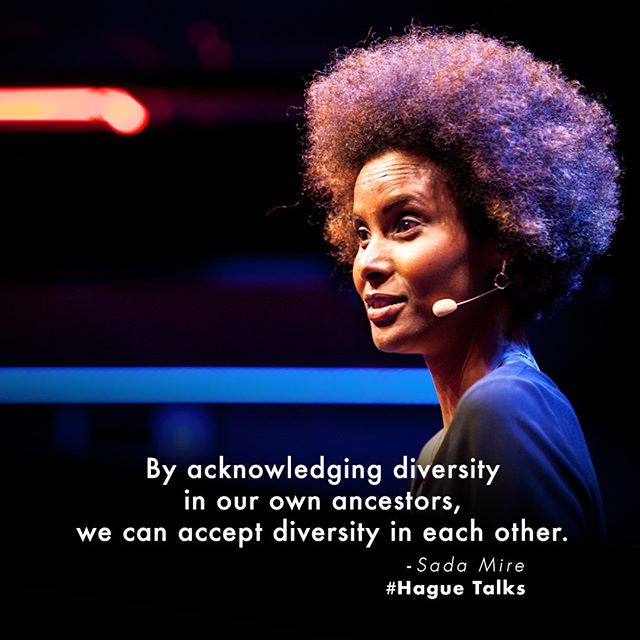
_______________________
SWEDEN / SOMALIA
